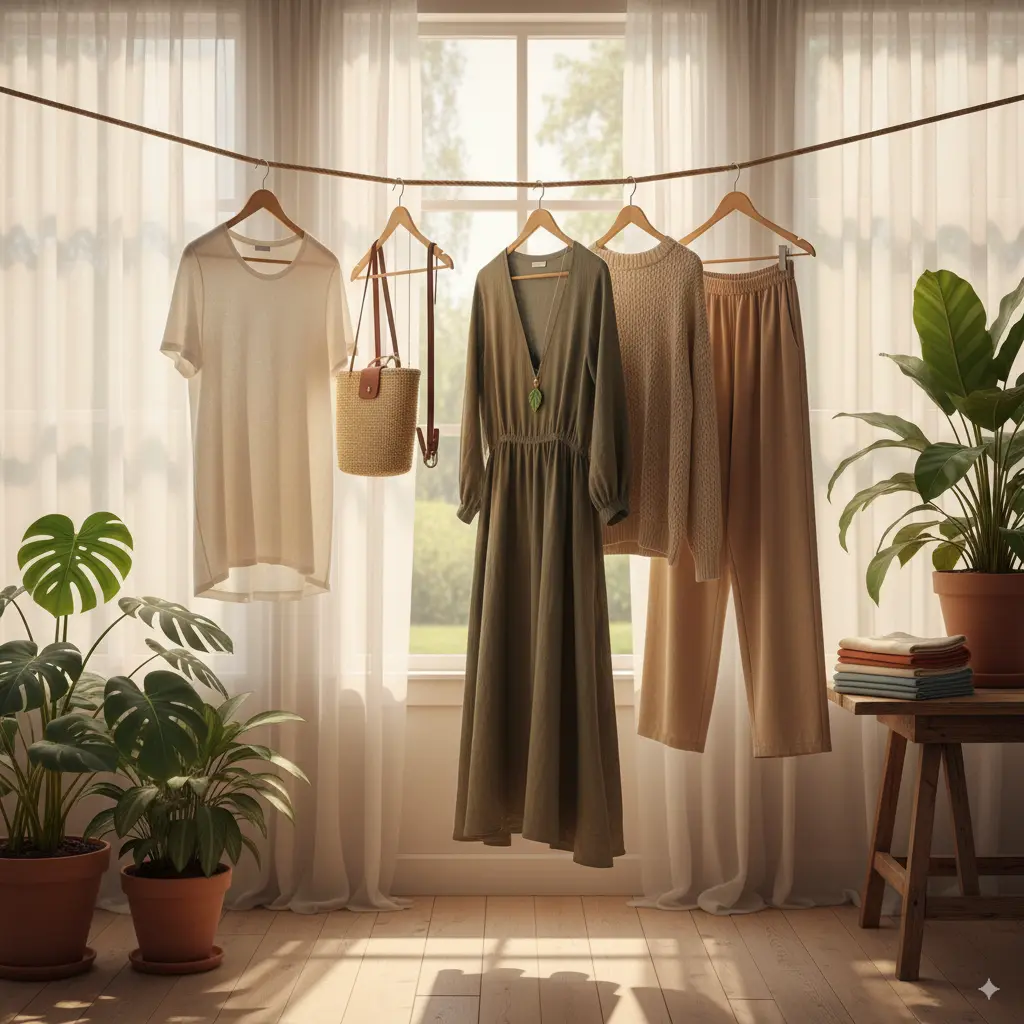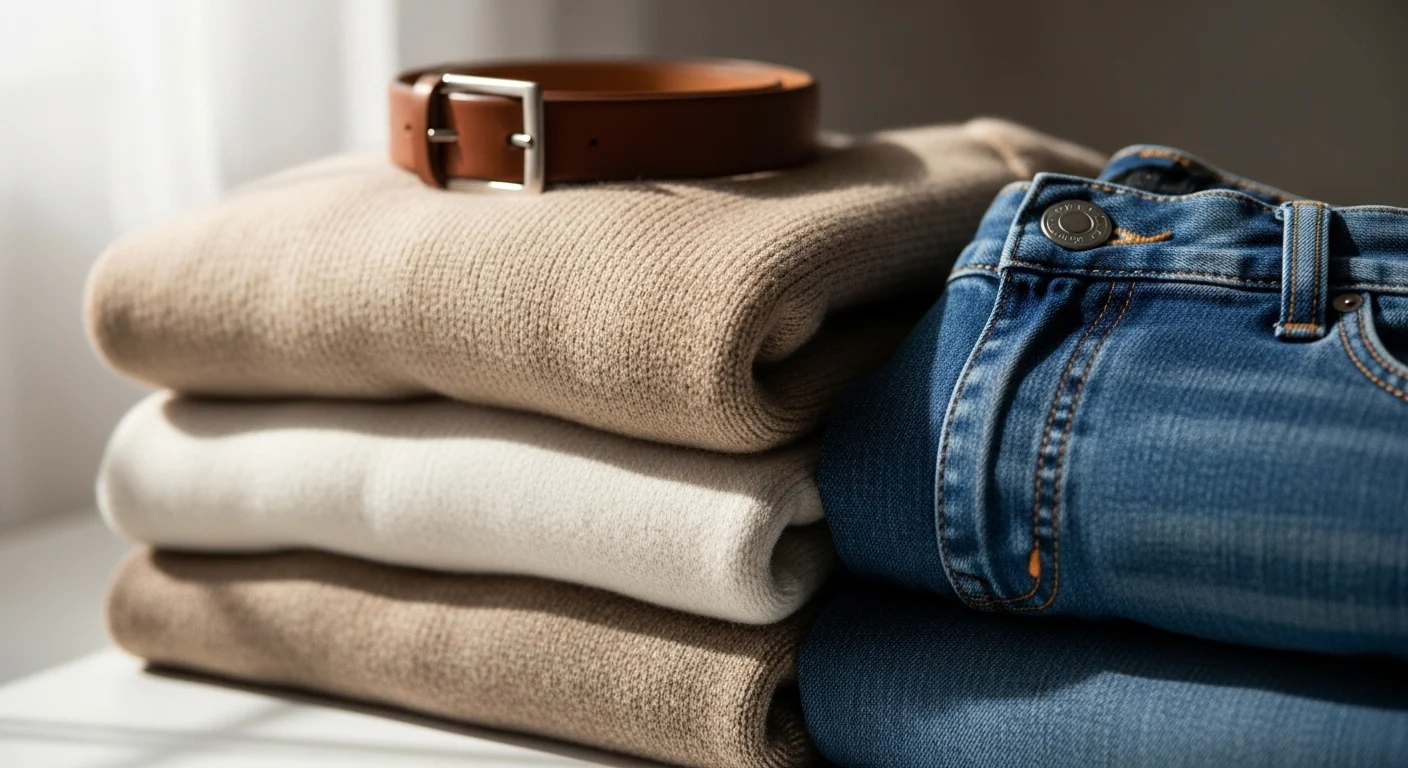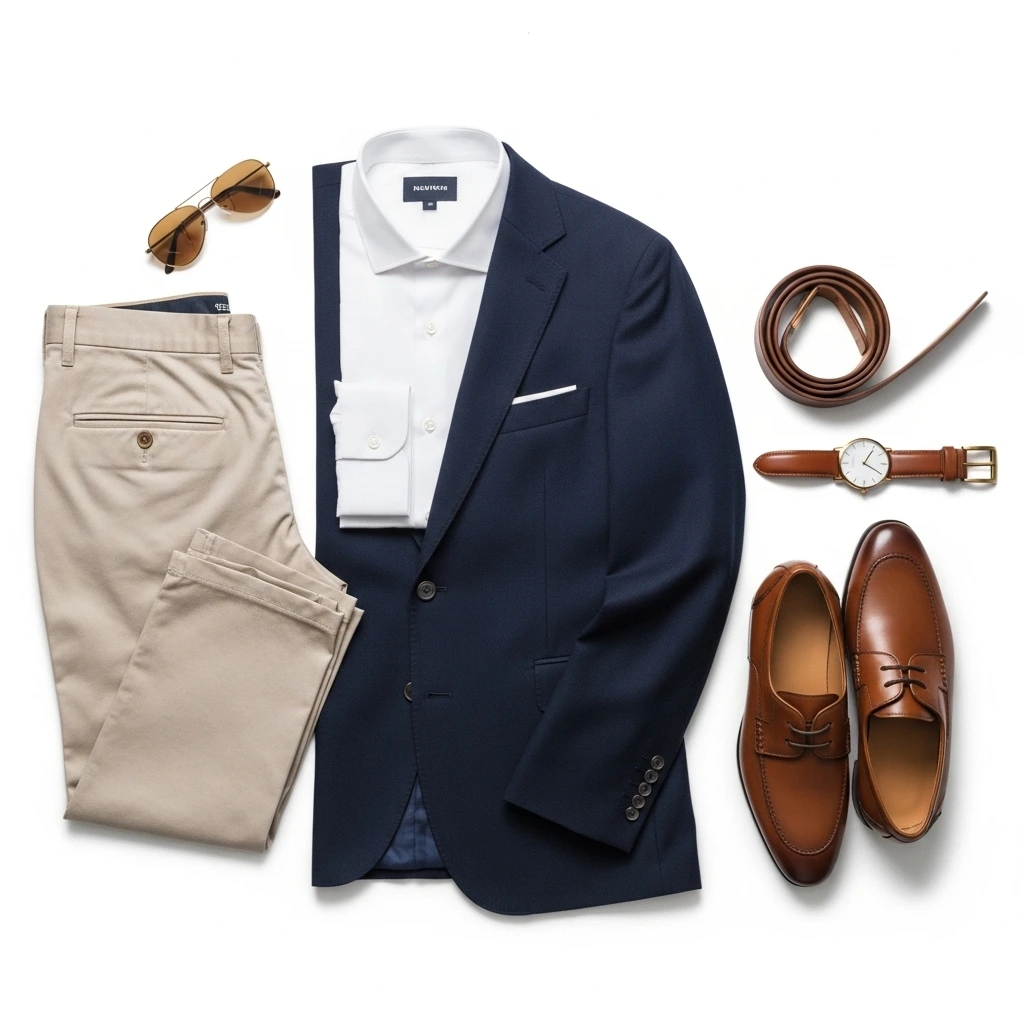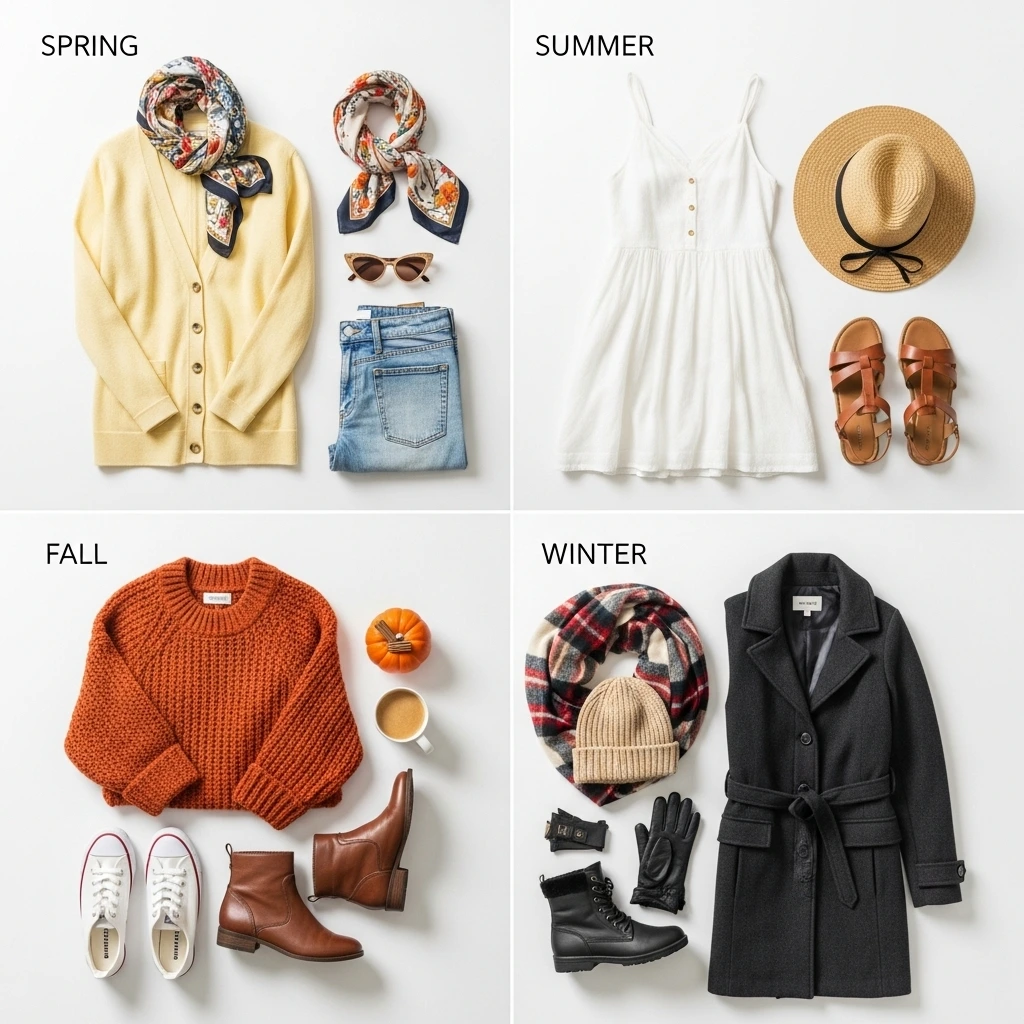Sustainable Fashion Guide 2025: How to Build an Eco-Friendly Wardrobe
Fashion doesn't have to cost the earth. Learn how to build a stylish, sustainable wardrobe that's good for you, your wallet, and the planet with our complete 2025 guide to ethical fashion.
Published: January 30, 2025
Reading time: 9 minutes

Sustainable fashion combines style with environmental consciousness
The fashion industry is one of the world's most polluting industries, responsible for 10% of global carbon emissions and 20% of wastewater. But here's the good news: you can look amazing while making choices that help heal the planet.
Sustainable fashion isn't about sacrificing style or breaking the bank. It's about making informed decisions that create a wardrobe you love while supporting practices that protect our environment and the people who make our clothes.
The Impact of Your Wardrobe
- • The average person buys 60% more clothing than they did 15 years ago
- • Each garment is worn 7-10 times before being discarded
- • 85% of textiles end up in landfills or are incinerated
- • Making sustainable choices can reduce your fashion footprint by up to 80%
What is Sustainable Fashion?
Sustainable fashion encompasses the entire lifecycle of clothing - from design and production to how you care for and eventually dispose of your garments. It considers environmental impact, worker welfare, and social responsibility.
Environmental
- • Reduced water usage
- • Lower carbon emissions
- • Minimal chemical pollution
- • Sustainable materials
- • Circular design principles
Social
- • Fair wages for workers
- • Safe working conditions
- • Community support
- • Gender equality
- • Cultural preservation
Economic
- • Long-lasting quality
- • Local production
- • Transparent pricing
- • Supporting small businesses
- • True cost accounting
The 5 Pillars of a Sustainable Wardrobe
Buy Less, Choose Well
Quality over quantity - the foundation of sustainable fashion
Before You Buy, Ask:
- • Do I really need this item?
- • Can I style it with at least 3 existing pieces?
- • Will I wear this 30+ times?
- • Does it fit my lifestyle and personal style?
- • Is the quality worth the price?
The 30-Wear Test:
Before buying anything, visualize wearing it 30 times. If you can't see yourself reaching for it regularly, it's not worth the investment.
Quality Indicators:
- • Fabric: Natural fibers or high-quality blends
- • Construction: Straight seams, secure buttons, finished hems
- • Hardware: Sturdy zippers, quality buttons
- • Fit: Comfortable and flattering cut
- • Care: Easy to maintain and clean
Cost Per Wear Formula:
Price ÷ Expected wears = Cost per wear. A $200 coat worn 100 times costs $2 per wear - better value than a $50 coat worn 10 times ($5 per wear).
Choose Sustainable Materials
The fabric makes all the difference
Best Sustainable Fabrics:
Organic Cotton
Uses 91% less water than conventional cotton. Soft, breathable, and biodegradable.
Linen
Made from flax plants that require minimal water. Gets softer with each wash.
Hemp
Grows quickly, improves soil health, and becomes softer over time.
Tencel/Lyocell
Made from sustainably sourced wood pulp. Silky feel with moisture-wicking properties.
Fabrics to Avoid:
Conventional Cotton
Uses 24% of global insecticides and 11% of pesticides despite covering only 3% of farmland.
Polyester
Petroleum-based synthetic that sheds microplastics in washing machines.
Conventional Viscose/Rayon
Production often involves deforestation and toxic chemicals.
Look for Certifications:
- • GOTS (Global Organic Textile Standard)
- • OEKO-TEX Standard 100
- • Cradle to Cradle Certified
- • Forest Stewardship Council (FSC)
Support Ethical Brands
Vote with your wallet for responsible practices
What to Look For:
- Transparency: Brands that openly share their supply chain, production methods, and worker conditions.
- Fair Labor Practices: Living wages, safe working conditions, and respect for workers' rights.
- Environmental Commitments: Concrete goals for reducing environmental impact with measurable progress.
- Local Production: Reduced transportation emissions and support for local economies.
Red Flags to Avoid:
- Greenwashing: Vague environmental claims without specific evidence or certifications.
- Extremely Low Prices: Prices that seem too good to be true often indicate exploitation somewhere in the supply chain.
- Lack of Information: Brands that won't share basic information about their practices or production.
- Fast Fashion Models: Brands releasing dozens of new collections per year encourage overconsumption.
Extend Clothing Lifespan
Proper care and maintenance keep clothes looking new longer
Sustainable Care Tips:
- Wash Less, Wash Cold: Washing in cold water saves energy and prevents color fading and shrinkage.
- Air Dry When Possible: Dryers wear out fabric fibers. Air drying extends garment life and saves energy.
- Use Eco-Friendly Detergents: Gentler on fabrics and the environment. Look for biodegradable formulas.
- Proper Storage: Hanging or folding correctly prevents wrinkles and maintains shape.
Basic Repairs & Alterations:
A 5-minute fix that can save a favorite shirt or jacket.
Professional alterations ensure perfect fit and extend wear time.
Visible mending can add character while extending garment life.
Steam cleaning, fabric shavers, and proper pressing can make old clothes look new.
Embrace Circular Fashion
Give clothes multiple lives through reuse and recycling
Alternative Shopping Methods:
- Thrift Shopping: Find unique pieces while reducing waste. Check consignment shops and online resale platforms.
- Clothing Swaps: Organize with friends or attend community events to refresh your wardrobe for free.
- Rental Services: Perfect for special occasions or trying new styles without the commitment.
- Upcycling Projects: Transform old pieces into new favorites through DIY modifications.
Responsible Disposal:
Clean, gently used items can find new homes through charity organizations.
Platforms like Poshmark, Depop, and Facebook Marketplace give clothes new life.
Many brands and retailers now offer take-back programs for worn-out clothing.
Old t-shirts make great cleaning rags, and jeans can become denim patches.
Building Your Sustainable Capsule Wardrobe
A capsule wardrobe is the perfect foundation for sustainable fashion. By focusing on versatile, high-quality pieces that mix and match easily, you can create countless outfits with fewer items.
Sustainable Capsule Essentials (25-30 pieces)
Core Pieces (10)
- • 2-3 organic cotton t-shirts
- • 1 white button-down shirt
- • 1 cashmere or wool sweater
- • 1 blazer in neutral color
- • 1 pair dark jeans
- • 1 pair tailored pants
- • 1 versatile dress
- • 1 midi skirt
- • 1 quality winter coat
- • 1 light jacket or cardigan
Footwear (8)
- • 1 pair leather dress shoes
- • 1 pair ankle boots
- • 1 pair sneakers
- • 1 pair flats or loafers
- • 1 pair sandals
- • 1 pair winter boots
- • 1 pair athletic shoes
- • 1 pair special occasion shoes
Accessories (7-12)
- • 2-3 quality handbags
- • 1-2 belts in different colors
- • 2-3 scarves for different seasons
- • 1 watch
- • Basic jewelry pieces
- • 1 hat for sun protection
- • 1 warm winter hat
Color Palette Strategy
Choose 2-3 neutral base colors (black, navy, gray, beige) and 2-3 accent colors that you love and that complement your skin tone. This ensures everything works together seamlessly.
Pro Tip: When building your sustainable wardrobe, prioritize natural fibers and timeless cuts over trendy styles. A well-chosen piece should work for at least 5-10 years in your wardrobe.
Sustainable Fashion on Any Budget
Sustainable fashion doesn't have to be expensive. With smart strategies and patience, you can build an eco-friendly wardrobe that fits any budget while supporting ethical practices.
💰 Budget-Friendly Strategies
- Start with what you have: Audit your current wardrobe and focus on caring for existing pieces better.
- Buy one quality piece at a time: Instead of buying multiple cheap items, invest in one high-quality piece each month.
- Shop end-of-season sales: Sustainable brands often have significant markdowns when seasons change.
- Use clothing repair services: Professional alterations can make old clothes look new again for a fraction of replacement cost.
🔄 Circular Economy Options
- Thrift and consignment shopping: Find designer and quality pieces at fraction of retail prices.
- Clothing swap events: Free way to refresh your wardrobe while meeting like-minded people.
- Online resale platforms: Apps like Poshmark, ThredUp, and Depop offer affordable pre-loved fashion.
- Rental for special occasions: Rent formal wear instead of buying pieces you'll wear once.
Busting Sustainable Fashion Myths
Myth: "Sustainable fashion is boring and unfashionable"
Reality: Sustainable brands are leading fashion innovation with cutting-edge designs.
Many luxury and contemporary brands are now prioritizing sustainability without compromising on style. From innovative fabrics to modern silhouettes, sustainable fashion is setting trends, not following them.
Myth: "You have to give up all your current clothes"
Reality: The most sustainable thing you can do is wear what you already own.
Sustainable fashion is about making better choices moving forward, not throwing away what you have. Focus on caring for your current clothes and making thoughtful purchases as you need replacements.
Myth: "All expensive clothes are automatically sustainable"
Reality: Price doesn't always indicate sustainability practices.
Many luxury brands still use unsustainable practices. Always research a brand's specific sustainability commitments, certifications, and transparency reports rather than assuming price equals ethics.
Myth: "Sustainable fashion is too complicated to understand"
Reality: Start simple - buy less, choose well, wear more.
You don't need to become an expert overnight. Begin with basic principles like buying fewer, higher-quality pieces and caring for them properly. Knowledge builds gradually as you make more conscious choices.
Start Your Sustainable Style Journey
Upload photos of your current wardrobe pieces and get personalized suggestions on how to style them sustainably. Our AI can help you maximize what you already own!
Analyze My Sustainable Style

